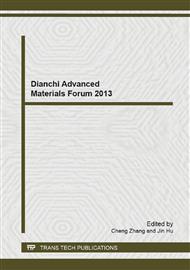p.159
p.165
p.169
p.173
p.177
p.181
p.185
p.189
p.193
Effect of Different Surface Treatments on Push-Out Bond Strength of Zirconia Oxide Posts
Abstract:
To Investigate the Effect of Different Surface Treatments on Push-out Bond Strength of Zirconia Oxide Posts in Root Canals. Sixty Single Rooted Extracted Teeth were Collected and Divided into Two Groups. Custom Milled Zirconium Oxide Posts (Cercon, Degudent, Germany; Cosmopost, Ivoclar, Liechtenstein) were Fabricated. Post Specimens of each Group were Subjected to Different Surface Treatments (n=10): no Treatment (control), Sandblasting then Silane Coating and Silane Application (SB+SC+SI), Sandblasting and Silane Application (SB+SI). all Specimens were Bonded with Relyx Unicem and Horizontally Sectioned into Three Sections and Subjected to a Push-out Test. Data were Analyzed Using Two-way ANOVA. Cercon Recorded Significant Higher Bond Strength than Cosmopost (P>0.05). Surface Treatments Recorded Higher Values than Control Group, and SB+SC+SI Presented Higher Bond Strength than SB+SI (P>0.05). there was no Significant Difference among Different Root Regions (P>0.05). Therefore Cercon May be more Suitable to be Used as Post Materials than Cosmopost. Surface Treatments have Significant Effect on Push-out Bond Strength of Zirconia Oxide Post and SB+SC+SI Group Presents Better Bond Strength than SB+SI Group.
Info:
Periodical:
Pages:
177-180
Citation:
Online since:
November 2013
Authors:
Keywords:
Price:
Сopyright:
© 2014 Trans Tech Publications Ltd. All Rights Reserved
Share:
Citation:


